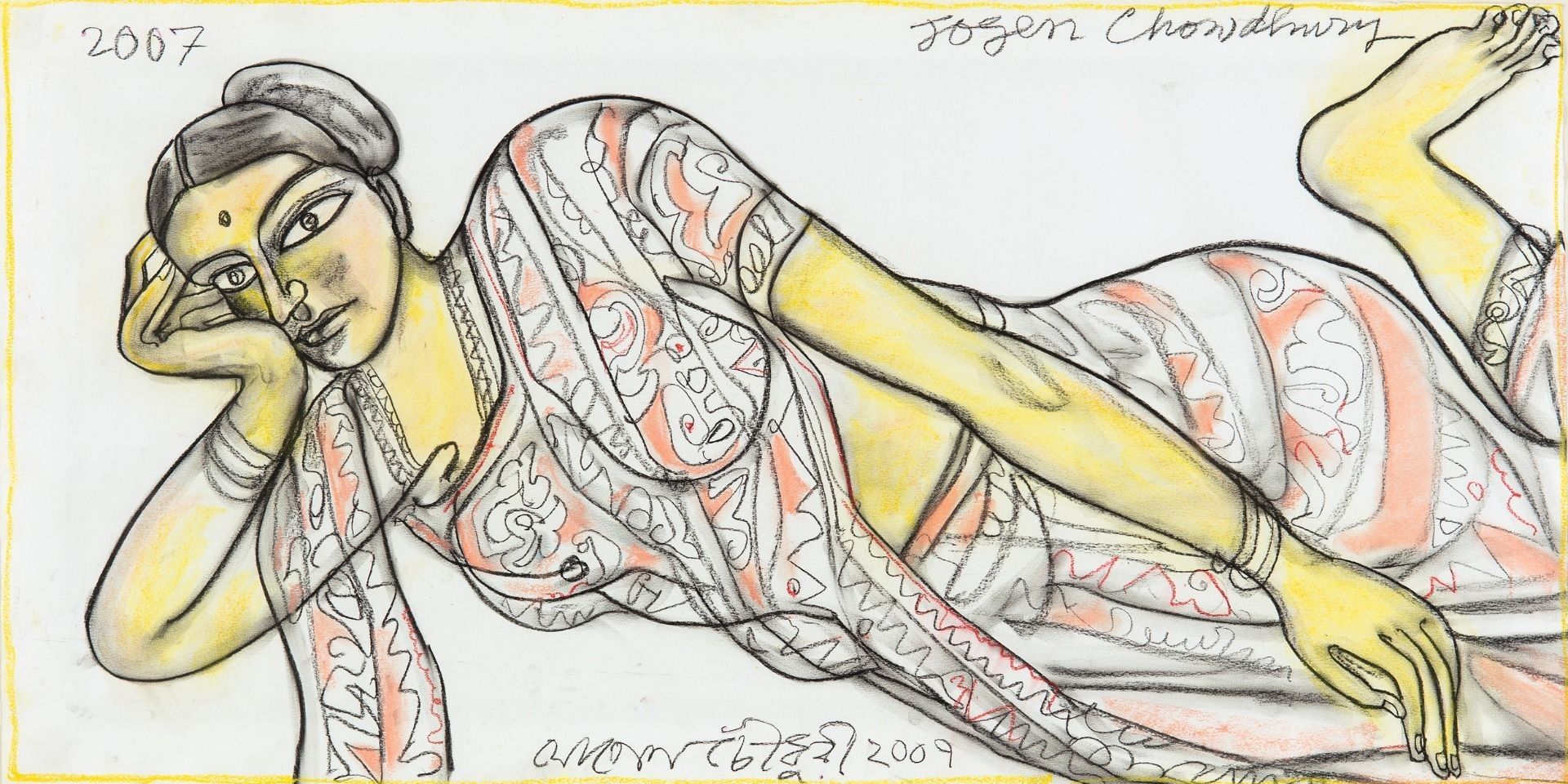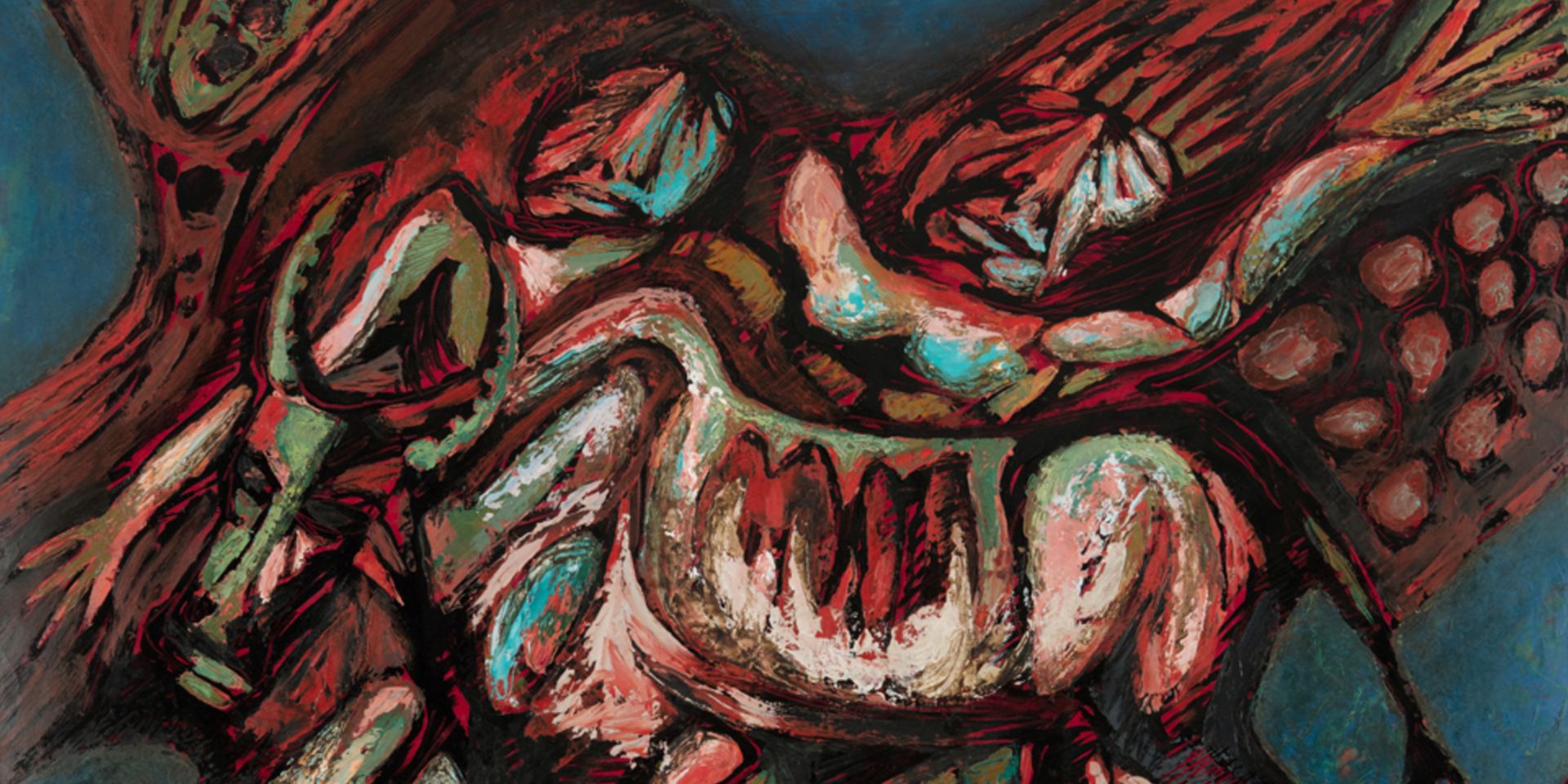Unarchiving the City: A Conversation with Swati Chattopadhyay
Unarchiving the City: A Conversation with Swati Chattopadhyay
Unarchiving the City: A Conversation with Swati Chattopadhyay
Unarchiving the City:
A Conversation with Swati Chattopadhyay
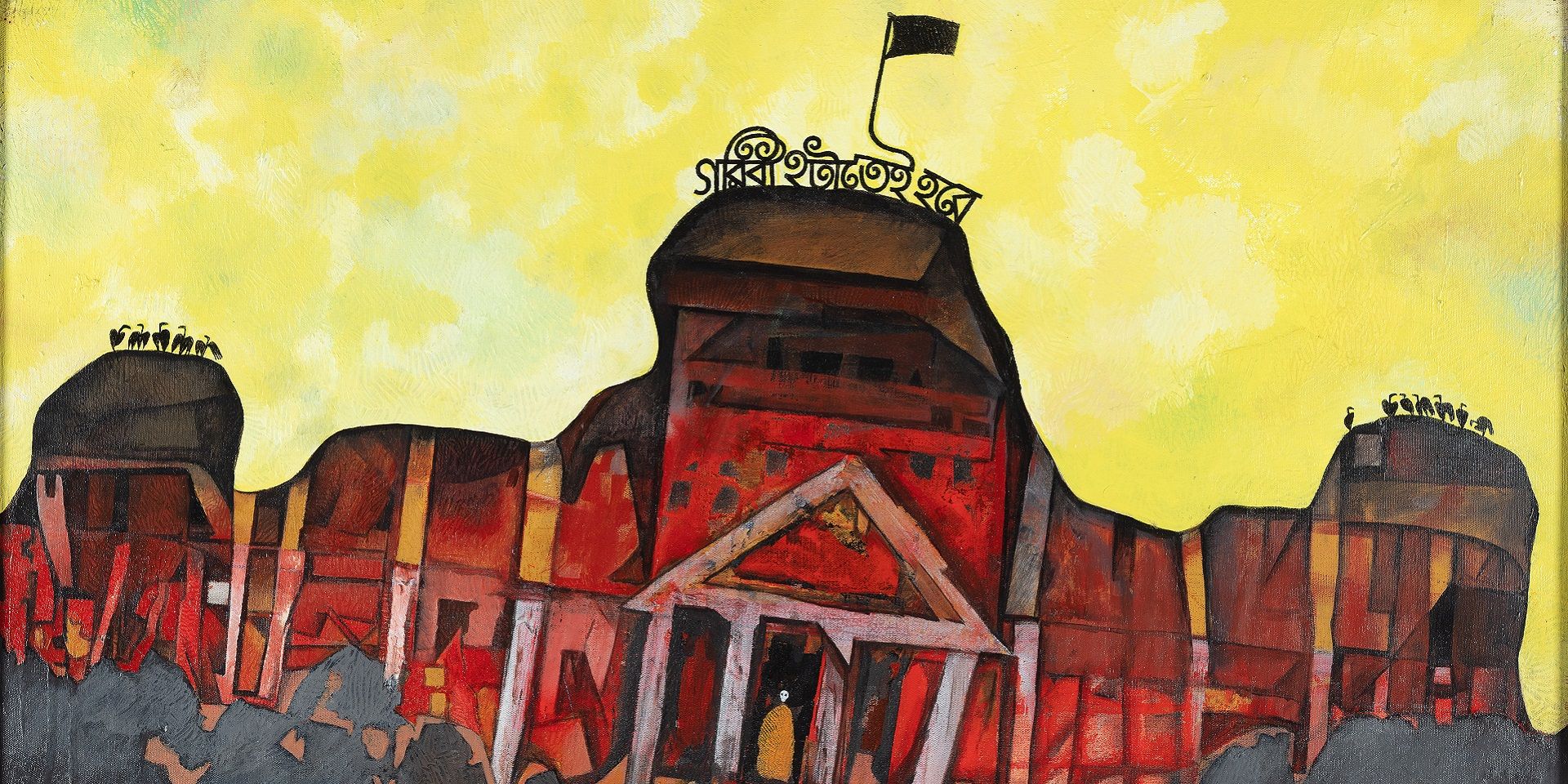
Prokash Karmakar, Oh Calcutta/ Writers' Building (detail), 1999, Oil and acrylic on canvas, 76.2 x 91.4 cm. Collection: DAG
The second part of our interview with architecture historian Swati Chattopadhyay, where she highlights her method of looking at architectural history through archives of visual art, including cinema.
Q. We were really interested in your consideration of cinema, which is again another visual format. You have looked at Bengali melodrama, especially from the 1950s, as representations of a newly emerging middle-class sensibility regarding conjugality, the family and gender roles. Can you tell us a little bit about how your analysis of cinema, in particular these melodramas, which are often thematically similar to literary texts, have to offer in terms of spatial and architectural study that these literary texts do not or may not?
Swati Chattopadhyay: What I was tackling in that essay [“Metro Pattern: Art Deco Residences and Modern Visuality in Calcutta”] and my writings on Art Deco are some basic problems of architectural history. What is it with Art Deco, that nobody can move beyond the visual? [Some of the contributions to Michael Windover and Brigitte Elliot, eds., Routledge Companion to Art Deco have remedied this problem]. Art Deco is seen as a visual phenomenon. It is next to impossible to find a plan of an Art Deco building. You'll find beautiful images, but rarely a building plan. We are so awed by Art Deco’s visual virtuosity that we don't bother to think about the social relations that it embodied or produced. Even media historians who have looked at the intersection of architecture and cinema, especially Hollywood cinema, have not examined the social basis of Art Deco, beyond what it reflects as a 'style’. I wanted to ask some very specific questions about Art Deco that relates to architecture.
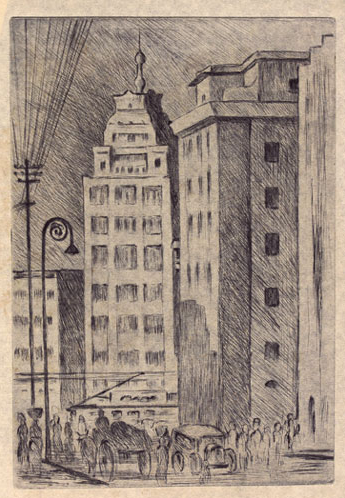
|
Ramendranath Chakravorty, Untitled, 25.4 X 17.8 cm. Collection: DAG |
I take architectural historian Dell Upton’s distinction between 'style' and 'mode' to distinguish between Art Deco as style—which refers to what is common, shared, recognisable as Art Deco, and Art Deco as mode that helps us think about its particular sociality. Mode creates distinctions among buildings against the background of style. Neither Bombay nor Miami Art Deco was impelled by the same forces as Art Deco in Calcutta. Each context was different. Having grown up among these Art Deco buildings in the mid-century urban milieu of Calcutta, I knew these buildings inside out and understood that there was a particular social history to this. In some ways, I was merely subjecting that body of materials and set of buildings to the same questions we ask for any building to think through their analytic potential. How do I explain the purchase of these buildings among the city’s residents?
Let’s take one element of the traditional Bengali house: we can think of the ‘uthon’ (courtyard) as a figure of space. A figure of space as opposed to just a space. It has an idea of either a subject or a set of expectations linked to it. So, we can ask, what is 'proper' to it—what happens in an 'uthon'? So when a courtyard is eliminated from a house plan, and replaced by a different space, what is now proper to it? What role does it play as a figure of space?
Film historian Moinak Biswas, in his article [“The Couple and Their Spaces: “Harano Sur” as Melodrama Now”], very effectively showed that in the mid-twentieth century Bengali filmmakers struggled with how to represent the space of modern conjugality [and this has something to do with their use of a courtyard space as a setting.]. This could neither be a space for the joint family nor could it be straightforwardly about romantic love, because these prospects were not available. In addition, the economic crisis of the post-independence era was accompanied by a crisis of masculinity. In Bengali films of the time, the women are the ones who are saving the day . . . They are the figures of hope, but they have to negotiate with the expectations of the ‘shoshur moshais’ and ‘shashuris’ (fathers and mothers-in-law). If you have some knowledge of Bengali novels, you can trace those affects back to the nineteenth century— refracted through the problematic of what constitutes intimacy in an extended family. Where is the space of intimacy in an extended family? I was trying to bring together the visual culture of the time with the architectural designs of these buildings to understand why are they configured in this manner. I was also looking at images from popular magazines of the time, reflecting on the role of the 'modern woman'. Now the same concerns with or articulations of the 'modern' were cropping up in house plans as well. With middle-class women working in salaried jobs outside the home meant they were not going to be home for much of the day. How would domestic space be configured accordingly? How would the servant-less household be designed? I wanted to understand the changing dynamics of interior space/space of interiority in this milieu.
Moinak’s work really helped me parse and bring together these very disparate sets of evidence I was looking at along with building plans and photographic documentation.
Cinematic space gave me an opportunity to think through the relation between the visual, the spatial and the sensory. But, I am not a film historian. As is my approach to works of art (I confine my analysis to the spatial), I would not write about a film unless there was something spatial in it that interested me. I think through films, using what I would call a technique of reading space that I have developed.
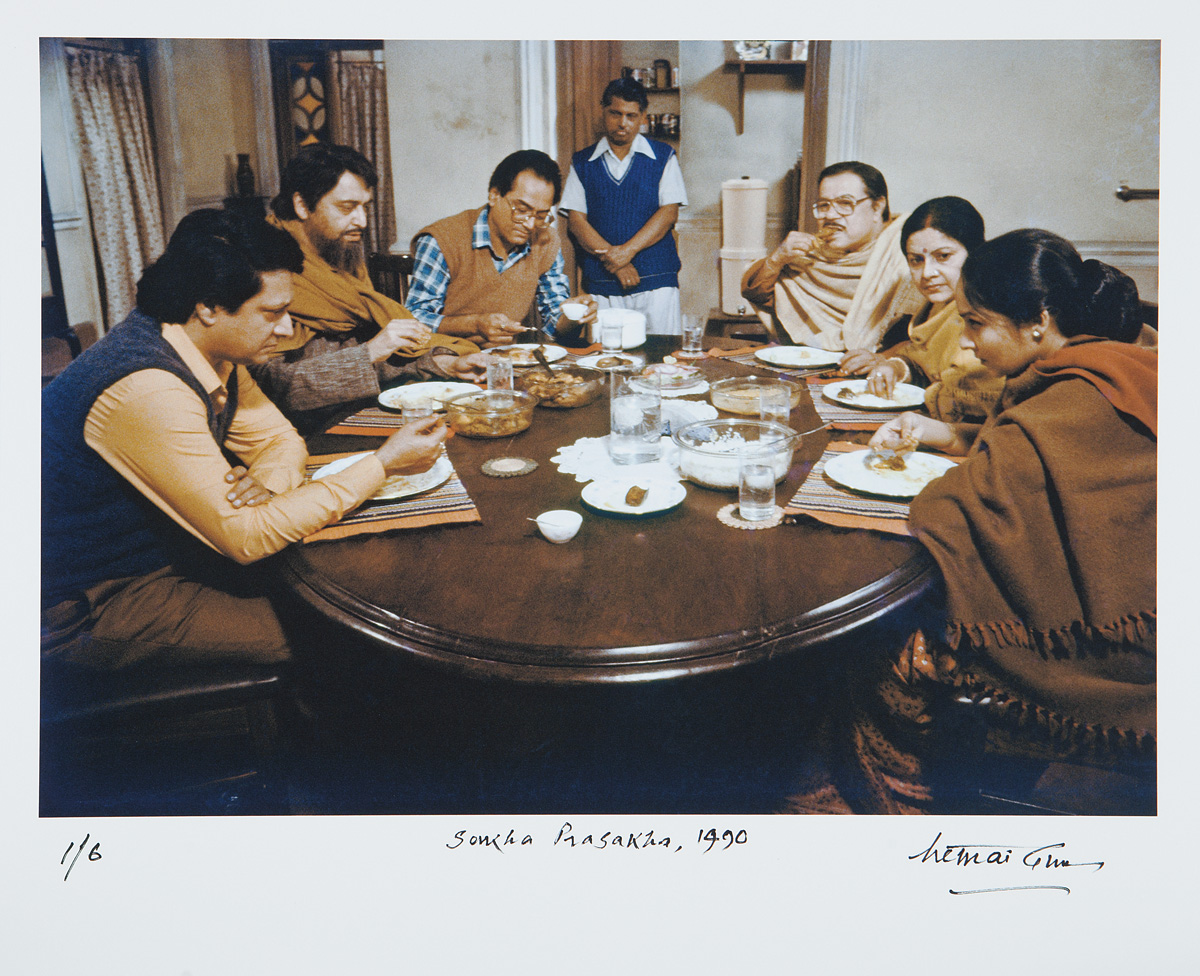
Nemai Ghosh, Scene from Satyajit Ray's Shakha Prosakha (Roots and Branches, 1990). Collection: DAG
Q. In your book Unlearning the City: Infrastructure in a New Optical Field, you write about how the acts of Binoy, Badal and Dinesh disturbed the norms of authority as implied by the political architecture of empire. Can you tell us how empires attempt to physically dominate space in order to dominate the mind?
Swati: Do we have to go to B.B.D. Bagh [Binoy, Badal, Dinesh Bagh; an administrative area in the city centre that was renamed from Dalhousie Square)? Think of what's happening in Gaza now. War is always about mind control. Either by destroying the mind or the body.
Political theorists such as Hannah Arendt have written extensively about the relation between public space and authoritarian rule. Arendt used the analogy of a band that holds people tightly to explain how under authoritarian rule, the space of citizenship contracts—you are bound by rigid limits and have no freedom to exceed them whether through bodily performance or speech acts. In such a scenario, just existing is a political statement. The defiance that “I won't die” may be a political statement.
I was writing about Binoy, Badal and Dinesh in the context of political wall writing. Political wall writing, which I differentiate from graffiti, is something that I grew up with between the late 1960s through the early 1980s when some of the most interesting wall writings were produced in Calcutta. I was trying to make a distinction between its visual quality and how it actually performs differently from graffiti—that is contemporary American-style graffiti. Graffiti is supposed to be visible, but its style encrypts: you don't have access to it unless you know the codes of that subculture. In contrast, the political wall writings were meant to directly address people, they were meant to reach out and create an audience.

Contemporary political wall writing in Kolkata. Image courtesy: Wikimedia Commons
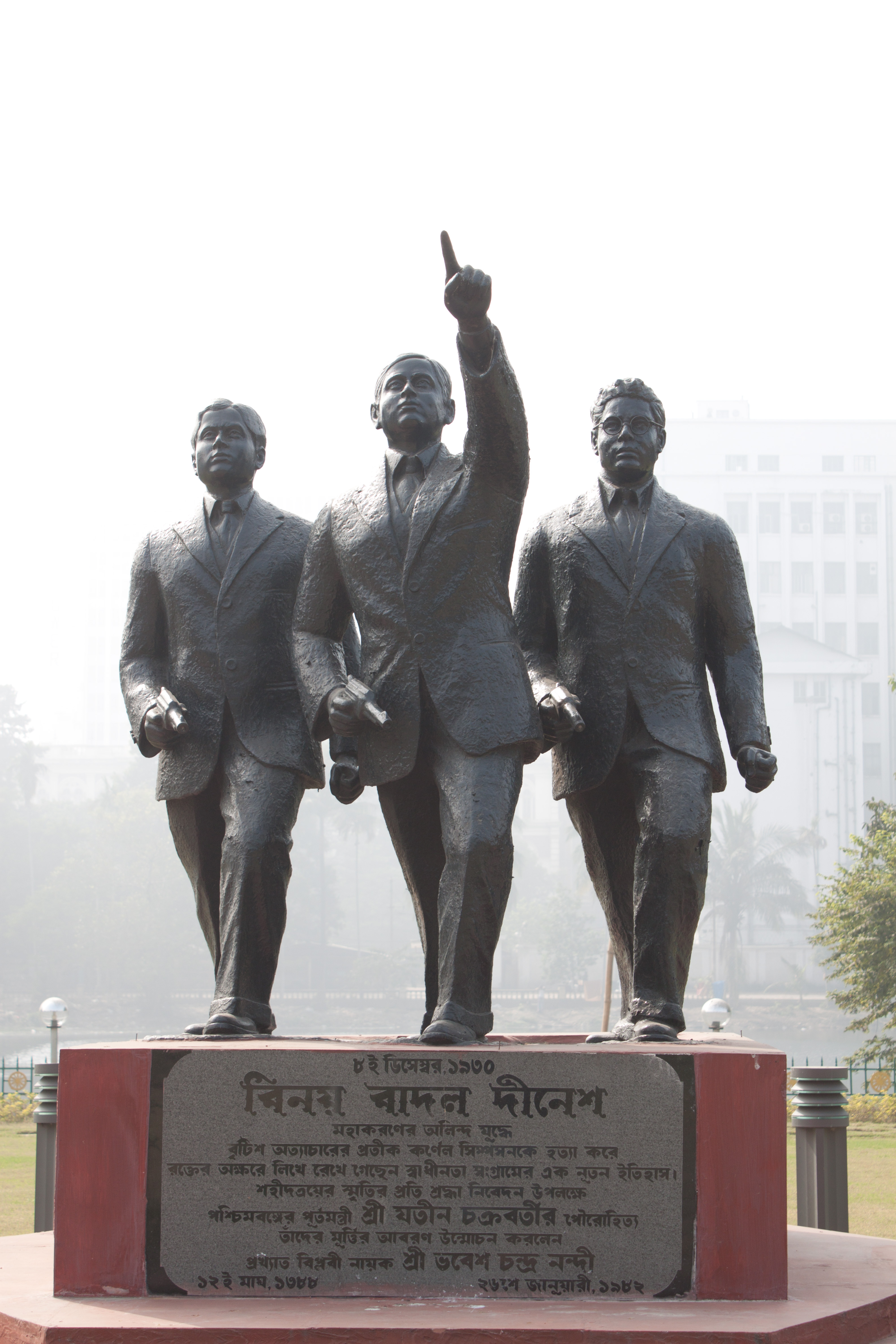
|
Statue of Binay Badal Dinesh in front of the Writers' Building, Kolkata. Image courtesy: Wikimedia Commons |
The historian in me was curious about the origins of wall writing, but there's no available archive for this. I was talking to people who undertook wall writing, who were anywhere between 10 to 15 years older than me and were active in political projects. Once I began speaking to them I realised there must be an older story to this. What I did know from my readings was that the posters that were circulated after Binoy, Badal and Dinesh’s shootings and Badal’s subsequent suicide, had inflammatory texts on them. I wanted to know that history.
I went to the West Bengal State Archives to look at the police archives, focusing on what was understood at the time as 'terrorism'. I was both very touched and extremely surprised by what I found—the police had retrieved these documents—posters, handbills, notices—as evidence of terrorist activity. Some of them were very small in dimension. These could be hidden in pockets, or under a shawl, and carried in a clandestine manner. The penalty for getting caught with one was serious. So the secretiveness. And yet these bills and notices would show up in the bar library, the gate of the D. M.'s (District Magistrate) bungalow, railings of parks, on school notice boards, and other public places. These were explicitly revolutionary texts, including somewhat oblique death threats.

Bijan Choudhary, Protest at Ochterlony Monument (Shaheed Minar), c. 1960, Watercolour and charcoal on paper. Collection: DAG
You have to imagine that space—the bills were everywhere and the police could not stop the circulation of these texts. This tells you about their mass appeal. If it showed up at the bar library: do you think somebody didn't know who put it up? You think the darwan (guard) in the D. M.'s bungalow didn’t notice a handbill being posted on the gate?
Interviewer: He's probably the one who put it up.
Swati: Yeah. If it's not him, it's a measured silence on his part. But you can also imagine, that for the D. M. that's a palpable threat, and something one cannot easily dismiss.
One of them [the bills] was torn off a tree trunk with the bark still glued to the back of the paper. And the only reason we have access to them is because the police archived them. I don't think anybody who printed those kept them for posterity—they're truly ephemeral in that sense. The presses that printed them could be closed down and the owners could be fined and jailed. I was interested in their materiality, that they were fragile, small, cheaply printed, and that some were handwritten. Even in remote villages, people were hand-copying these bills for distribution in the absence of mechanized copying techniques.
I was interested in how [the bills] were of a certain format, carried a certain content, how they had to economize what they were saying, and the use of the oval portrait form in the posters [for example the ones that were circulated after Binoy’s death]. The oval portrait configuration is a family portrait form connected to nineteenth-century Victorian photography. It was chosen, not as a mugshot, but to make the domestic, the private, the personal, public. Because of the framing you could relate to him as your son, your brother, your friend. Binoy, Badal, Dinesh’s case gave me a sense of how a certain regime controlled political discourse and how it changed in the post-independence period, becoming openly confrontational.

Prokash Karmakar, Oh Calcutta/ Writers' Building, 1999, Oil and acrylic on canvas, 76.2 x 91.4 cm. Collection: DAG
During the heyday of political wall writing—between the late 1960s and mid-1980s— sometimes political wall writings would be whitewashed, but most of the time they stayed. I heard an anecdote that Indira Gandhi was sent a whole folio of what was being written about her on the walls during the Emergency. No action was taken to prohibit this form of political commentary, however. Do you think the current regime would let it pass? You understand the state's authoritarian position based on what kind of public discourse is allowed. This applies to what was happening in colonial India, or in Nazi Germany, what’s happening in Israel now, and the kind of censorship in the U. S. media. It is worth asking, what is democratic speech? In this country voicing your opinion is increasingly dangerous. Public discourse has a direct correlation with the degree of authoritarianism of the state. That correlation is what I wanted to understand.
In the case of Binoy, Badal and Dinesh one has to ask, was it worth sacrificing three lives? In terms of just body count, it was spectacularly unsuccessful, but it was spectacular, nonetheless. The people of the time understood the ripple effect of that—that their actions would spread to places beyond the immediate site of action. Dinesh's body was cremated within the jail, because the authorities knew if it was allowed to be taken outside there was going to be a massive gathering and political rally.
The power of popular movements and the visual cultures they inspire: there's actually little written about it. I was interested in why in the 1970s and early 1980s political wall writing flourished, even though it was technically illegal, or something that the government did not always condone.
The practice changed in the 1990s. The liberalization of the economy ushered in a new concern with property rights and the concept of public space. This got me interested in the tradition of public space in Indian cities and it was the reason why I wanted to look at these potent ways of using public space. My goal was not to valorise the popular, but to understand what makes something popular and what are the modes of mobilizing the popular; because that's a political project.
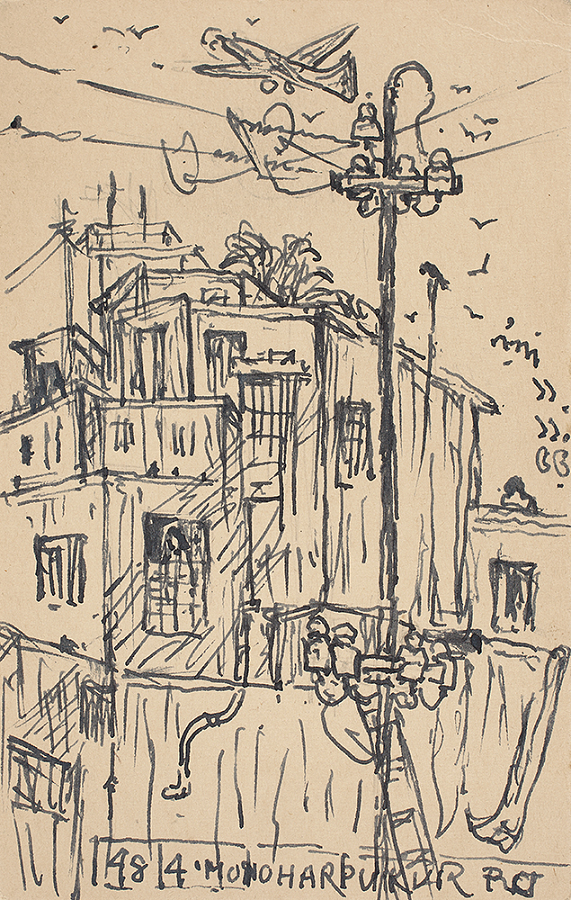
|
Nandalal Bose, Untitled, 1955, Graphite and ink on postcard, 14.0 X 8.6 cm. Collection: DAG |
Q. In your essay on bus arts, you portray how text and image come together to address dissent. In the present age when the canvases or buses are being filled with advertisements of all sorts how do you think this form of expression is being affected?
Swati: A culture needs to value a certain discourse for it to flourish. It was sufficiently important for the bus owners at one point who allowed it to happen. Perhaps the bus owners and artists are no longer particularly interested in having that dialogue, or to make the smart and sassy comments about social life through bus art. [Perhaps it has all shifted to social media?].
When I see something written on a bus like ‘Don't kiss my tail’, it draws me into a conversation with the person who wrote that. If you think about it, this is very provocative in a way. But simultaneously there’s also a casual aspect about it. There’s a lightness about it—it doesn't take itself too seriously. If something takes itself too seriously—if it is devoid of irony [characteristic of fascism] that is—then we are in the realm of propaganda. You have to have self-criticality, a sense of irony for it to work at multiple levels for multiple audiences.
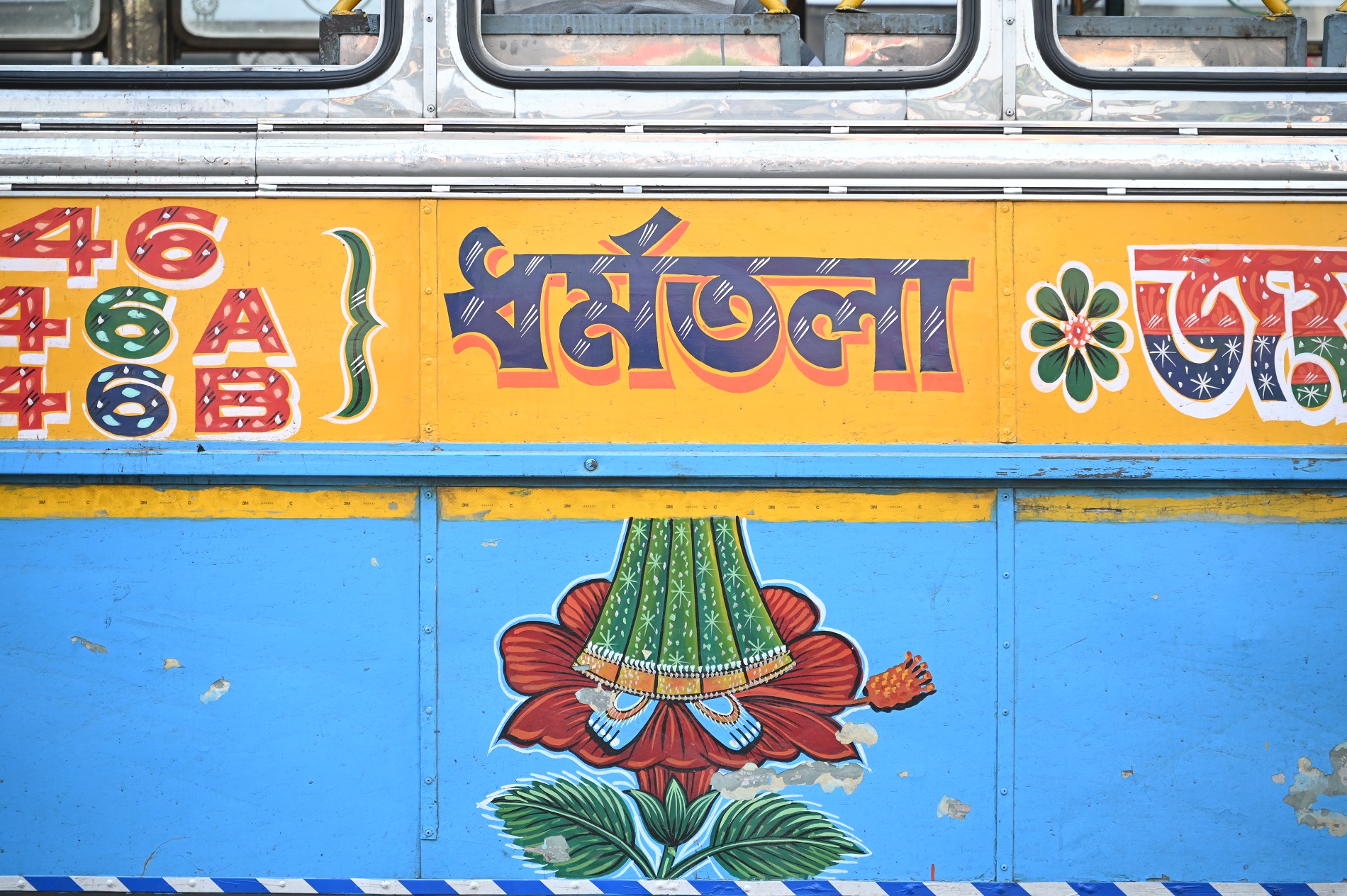
Contemporary bus art in Kolkata. Photographer: Parameshwar Halder

Bus artist Bazlur Rahaman demonstrates his artistic technique. Photographer: Parameshwar Halder
While I was doing that research, the bus surfaces were already beginning to get covered with advertisements. I think that the time of wall writings and vehicular art in general is gone. You can still see some of it, in trucks, etc., but the ones on trucks were never politically engaged. There are some funny texts in there, and they're beautifully drawn. The ones on private buses and minibuses, however, for a certain period of time were politically engaged, but that time is gone. You see, whether it's in public space or public transportation, we are no longer within those discourses. It is perhaps an effect of market liberalization.
This year the commercial hoardings on the streets of Kolkata during Durga Puja were taller than I've ever seen, completely covering the facades of the buildings. I heard much discussion about how this is a real challenge to the city’s' existing visual culture. What is not getting recognised here is that you cannot call that out separately and condone every other way we, the imperial 'we', have objectified our relations through commercial exchange. Why do we get to pick and choose which commercial aspect of visual culture is good? I have no patience for that kind of naivety. If you cannot see the relation between that and our own consumption practices, then we are doomed. The liberal bourgeois communities are blind to their own limitations, because there's a comfort zone within which we operate—socially, politically and economically.

Contemporary bus art in Kolkata. Photographer: Vinayak Bose
In part one of this interview Dr Chattopadhyay spoke about her approach towards visual art, ranging from paintings by Abanindranath, Daniells to Kalighat Pats and more. In part two we explored her method of reading space through a variety of other medium including cinema, and ‘ephemeral’ mediums of vehicular art and wall writings—mediums we often seek to engage in our explorations of the city through prorammes like 'The City as a Museum'.
To read the first part:
Click here
To read about ‘The City as a Museum’, Kolkata, 2023:
Click here
related articles

Conversations with friends
The Making of the Dhaka Art Summit: Behind the scenes with the Curator
February 01, 2023
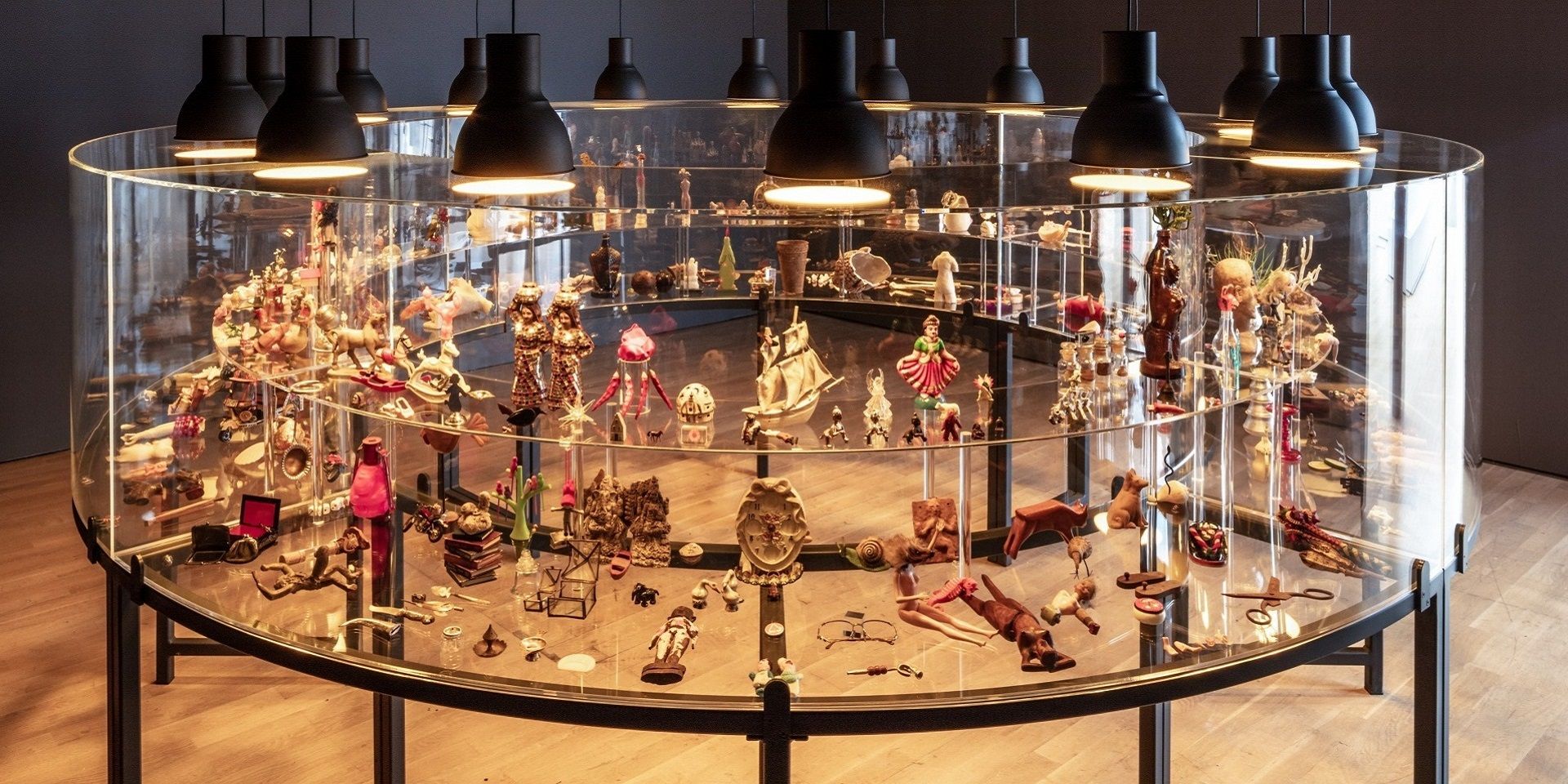
Conversations with Friends
Conscious Collecting with Asia Art Archive and Durjoy Rahman
Editorial Team
March 01, 2023

Conversations with Friends
Mysteries of Indian Art: A Conversation with Mamta Nainy
The Editorial Team
May 01, 2023
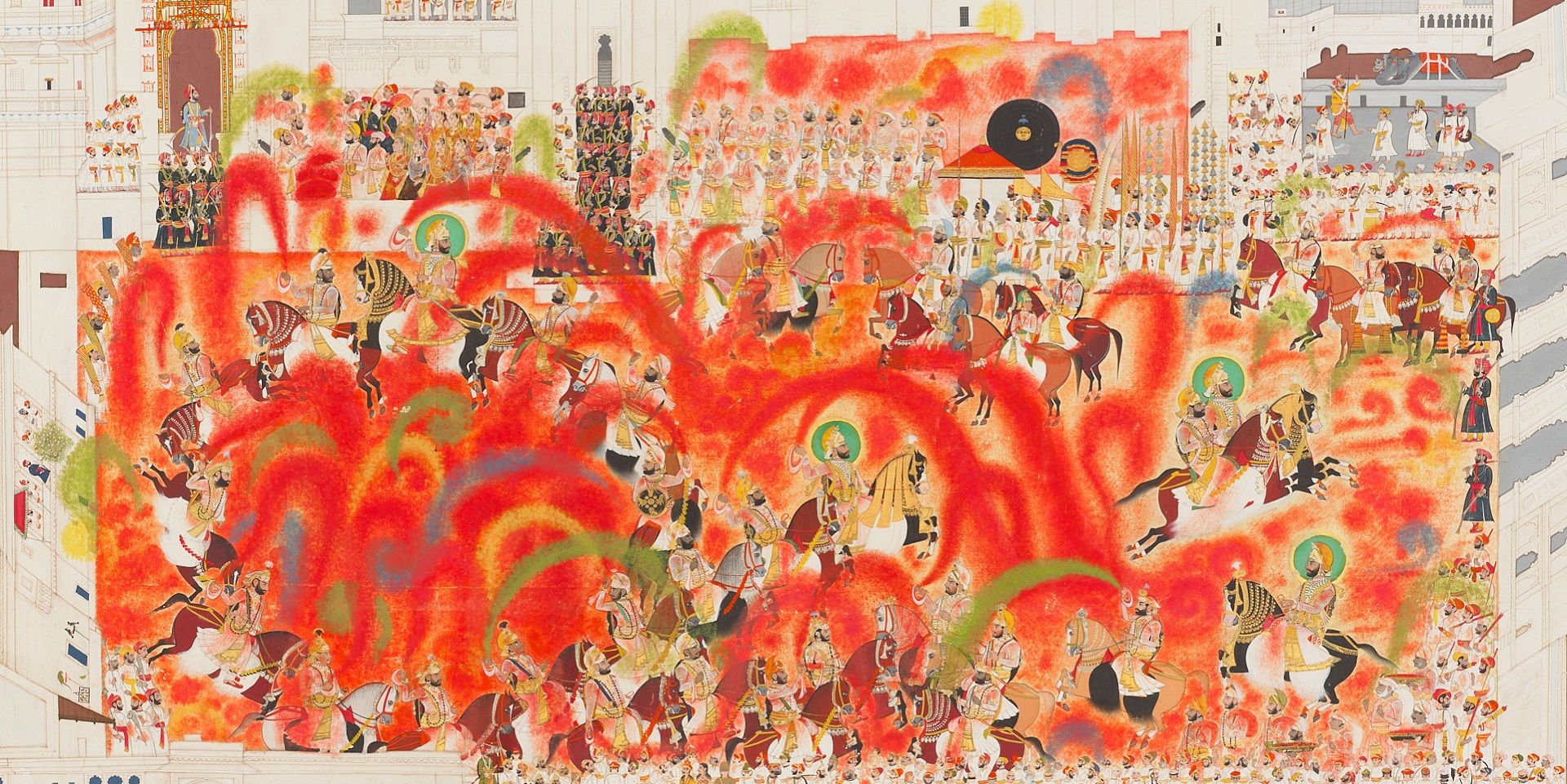
Conversations with Friends
Debra Diamond on Royal Udaipur painting at the Smithsonian
Ankan Kazi
June 01, 2023

Conversations with Friends
Imaging Water: A Conversation with the Smithsonian's Carol Huh
Ankan Kazi
July 01, 2023

Conversations with Friends
Debating secularism in South Asian Art with Tapati Guha-Thakurta
The Editorial Team
August 01, 2023

Conversations with Friends
Remembering Ambadas with art critic Prayag Shukla
Ankan Kazi
August 01, 2023
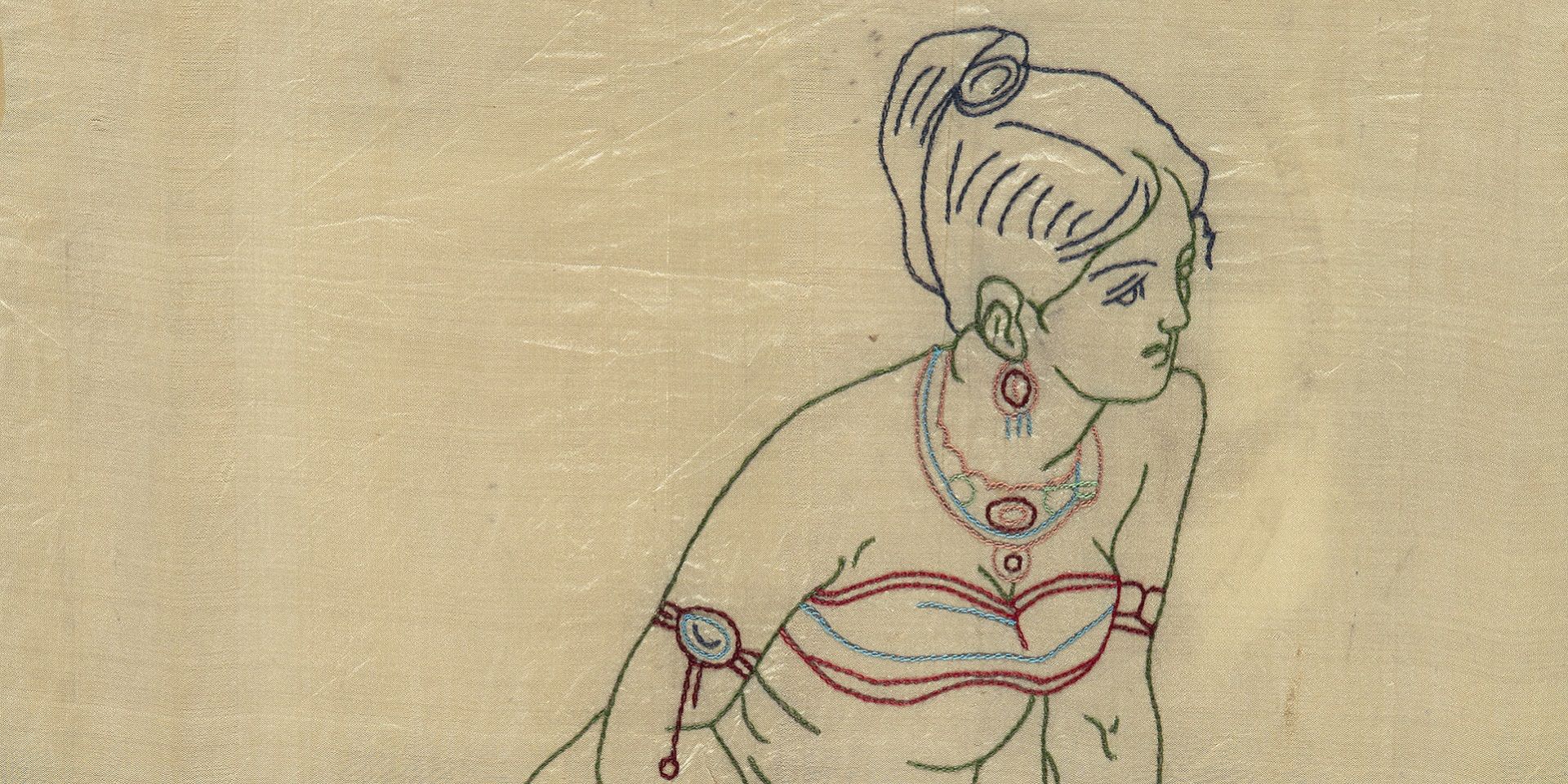
Conversations with Friends
Discovering the lives of Bengal's women artists with Soma Sen
Ayana Bhattacharya
September 01, 2023
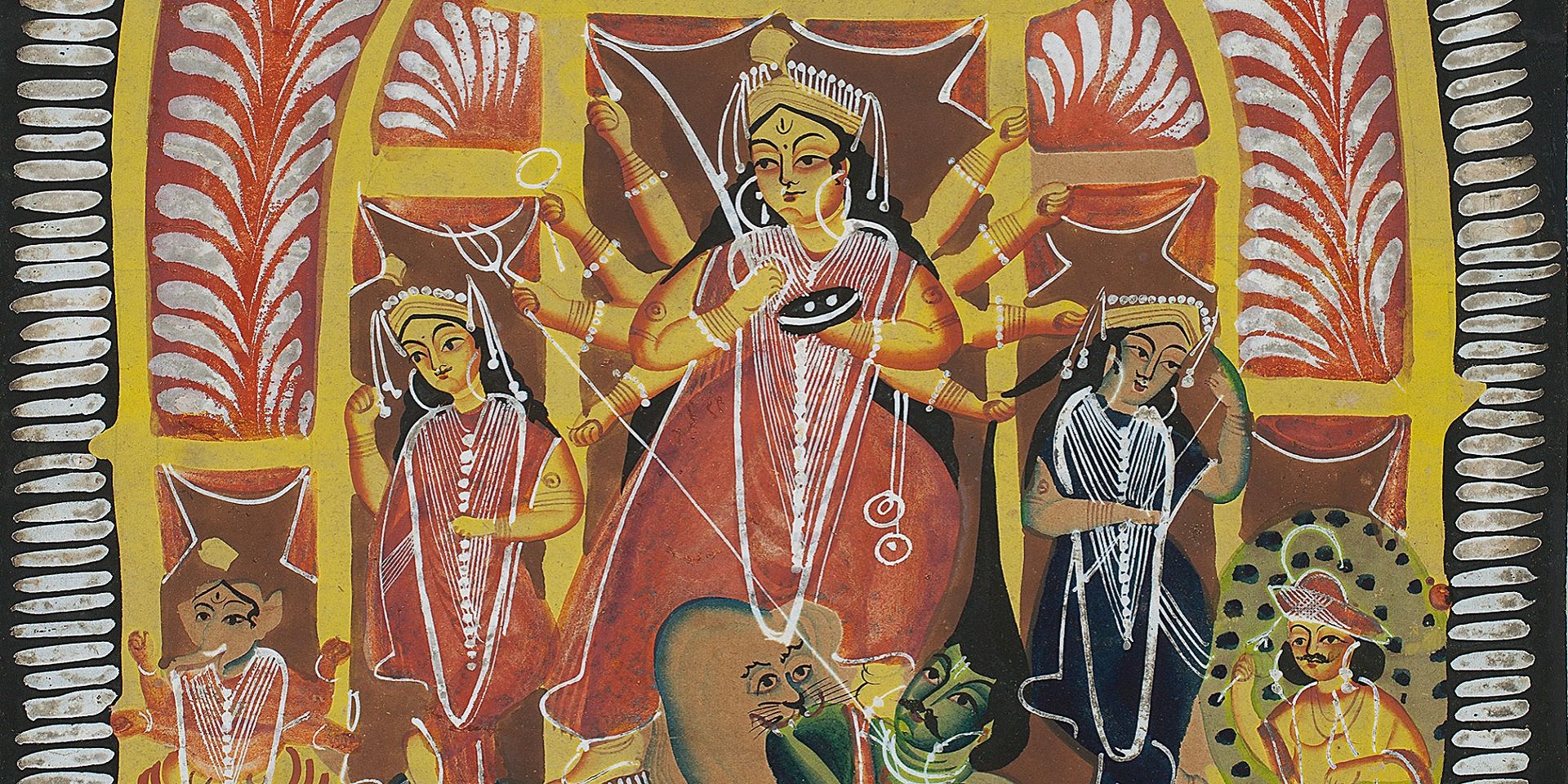
Conversations with Friends
Debating secularism in South Asian Art with Dr. Guha-Thakurta II
The Editorial Team
September 01, 2023

Conversations with Friends
Becoming New Delhi: A Conversation with Swapna Liddle
Ankan Kazi
October 01, 2023
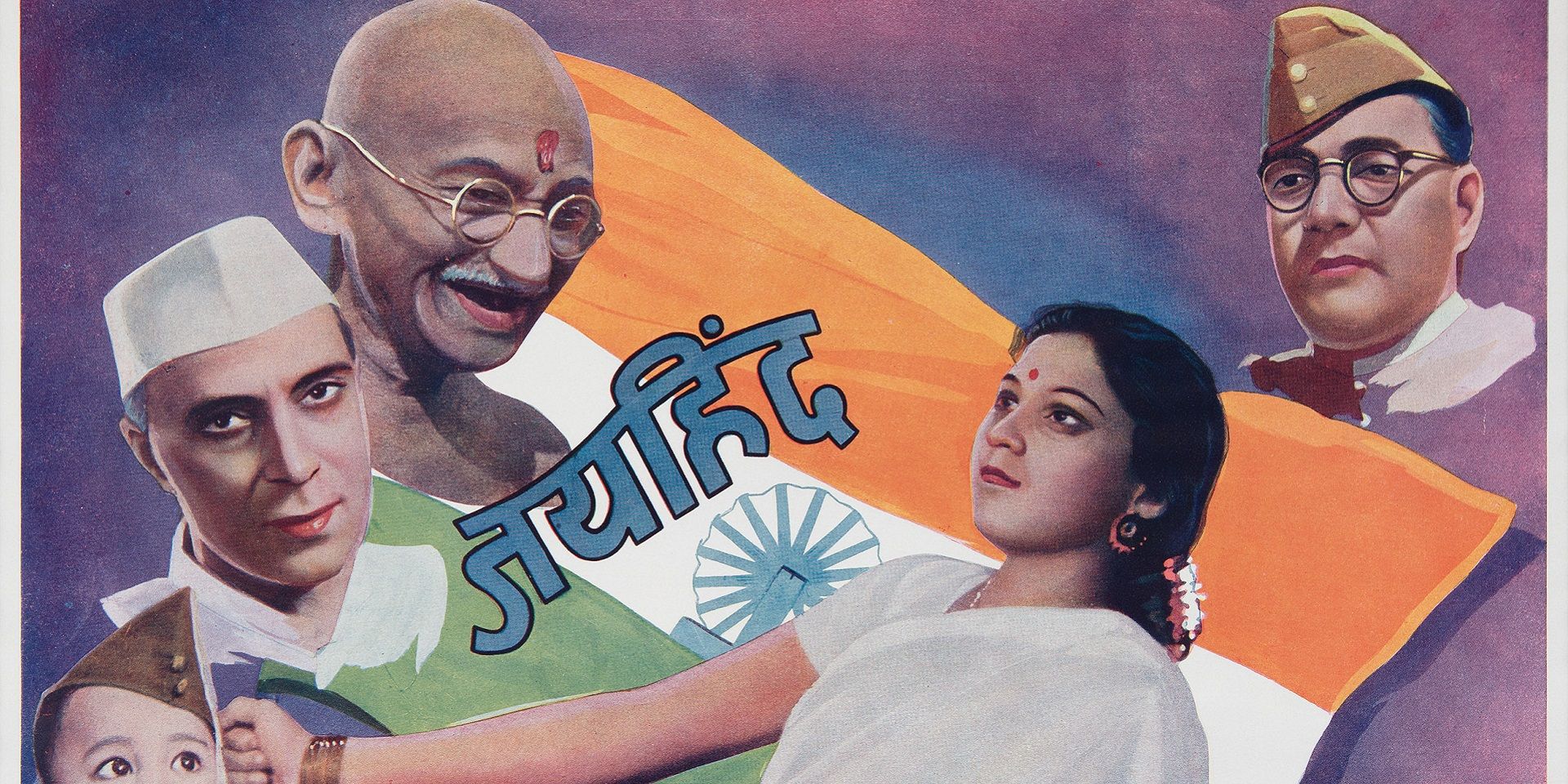
Conversations with Friends
Visualising the Freedom Struggle: A conversation with Vinay Lal
Ankan Kazi
November 01, 2023
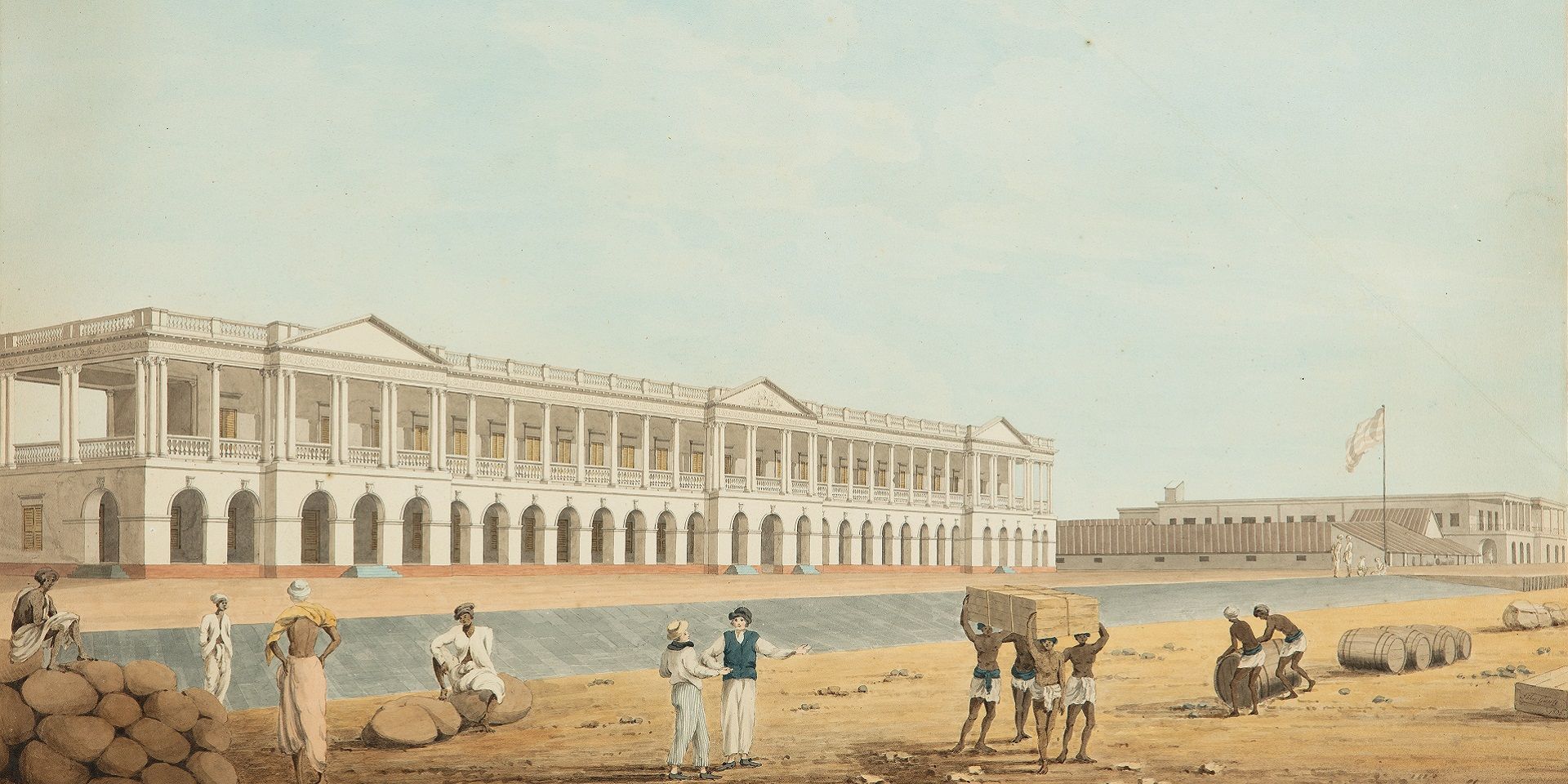
Conversations with Friends
Building an Empire: A Conversation with Rosie Llewellyn-Jones
Ankan Kazi and Giles Tillotson
December 01, 2023
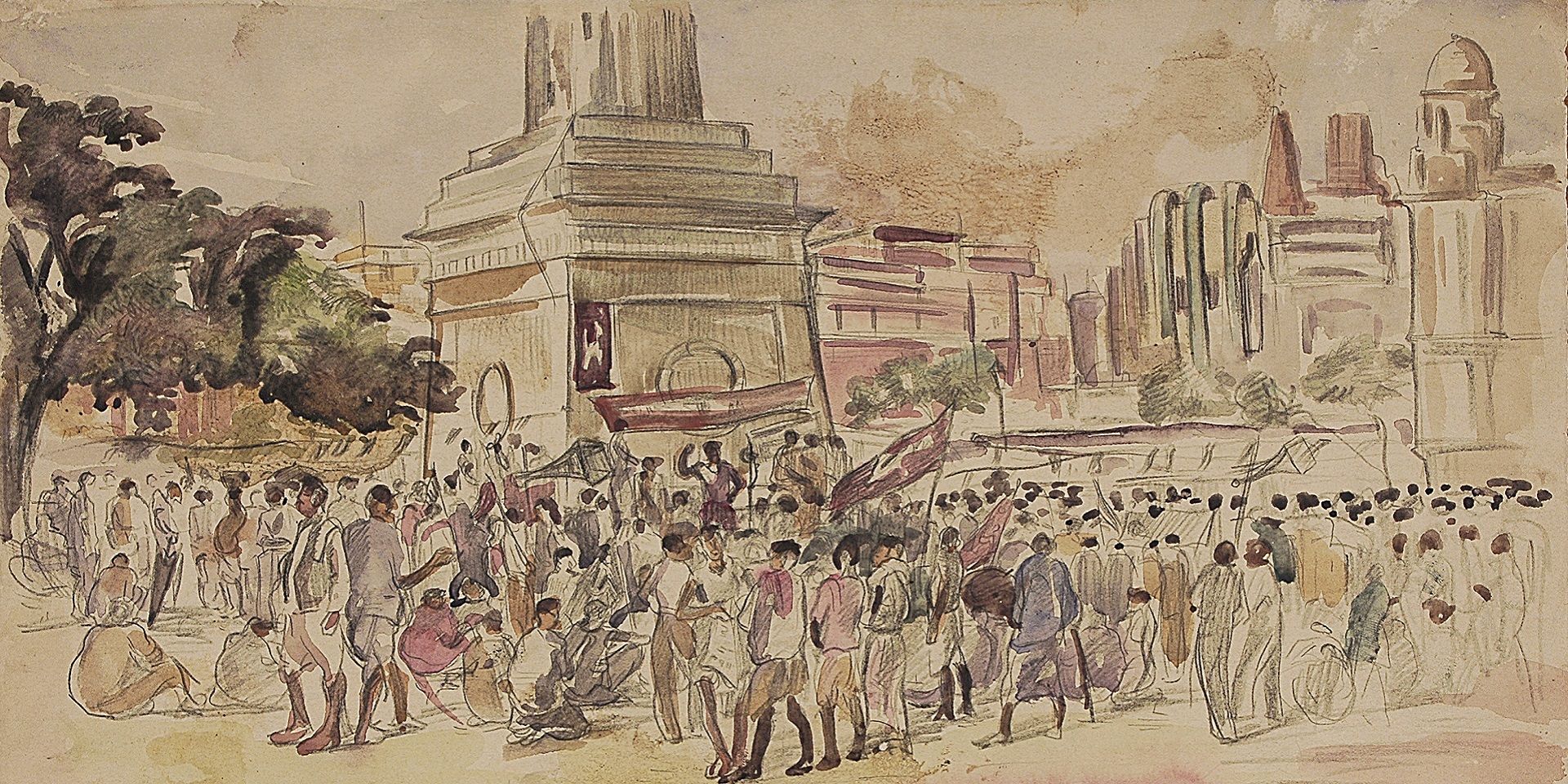
Conversations with Friends
Designing Calcutta: Navigating the city with architectural historian Swati Chattopadhyay
Shreeja Sen and Vinayak Bose
December 01, 2023
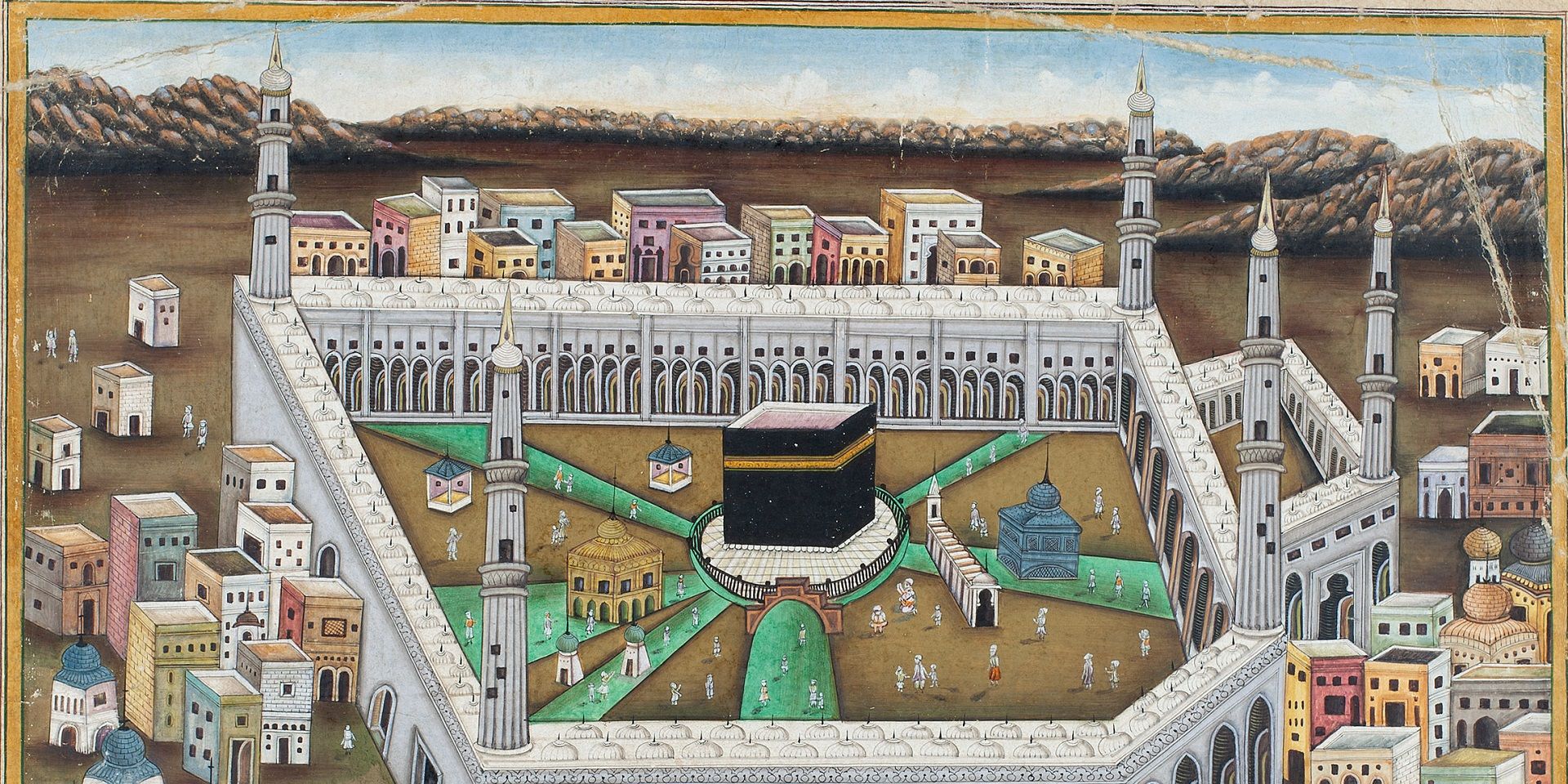
Conversations with Friends
Partition and Popular Art: A Conversation with Yousuf Saeed
Ankan Kazi
January 01, 2024

Conversations with Friends
Singing to Kali: A Conversation with Rachel F. McDermott
Ankan Kazi
February 01, 2024
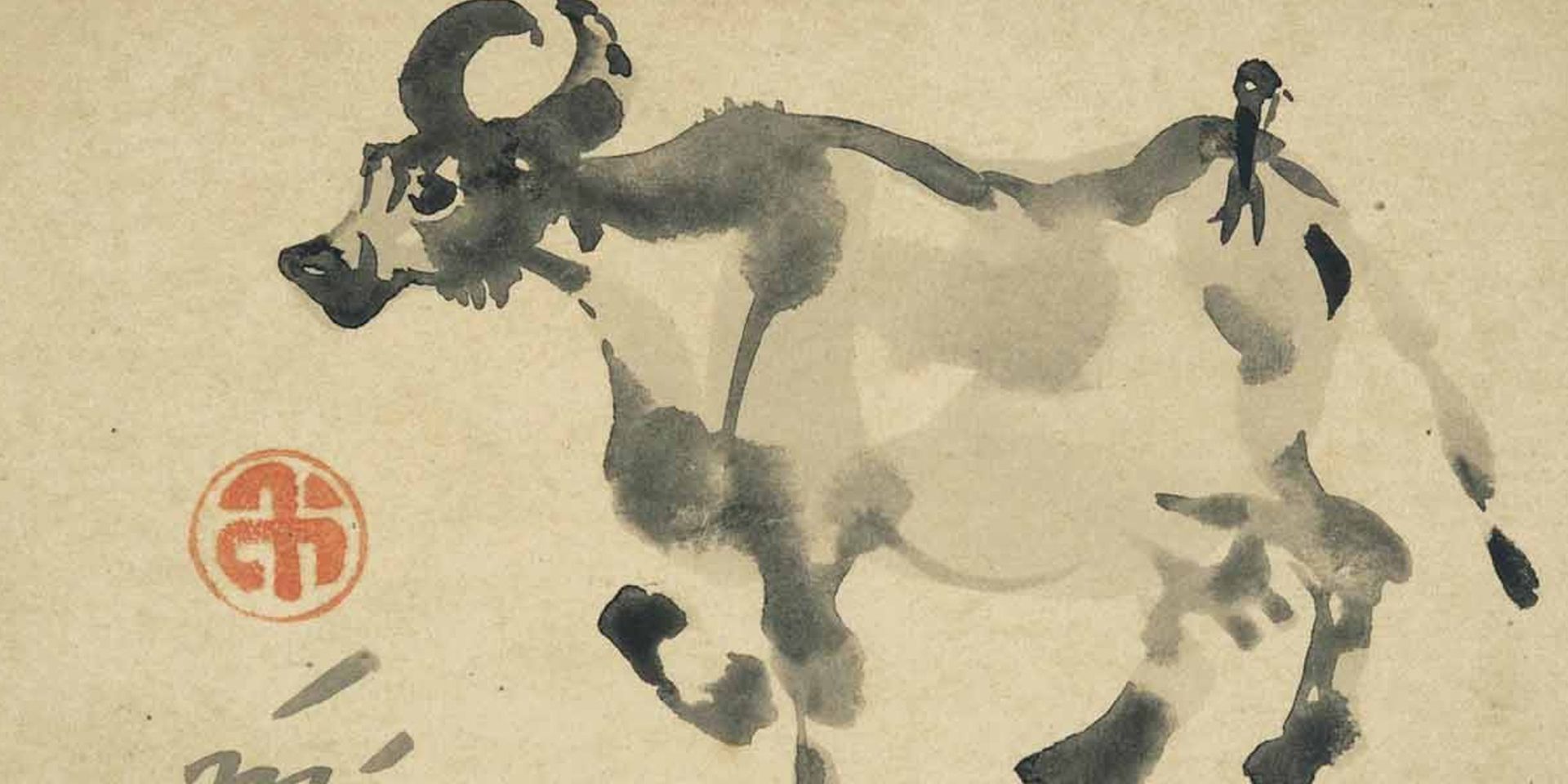
Conversations with Friends
The Asian Moment: A Conversation with Sugata Bose
Ankan Kazi
May 01, 2024
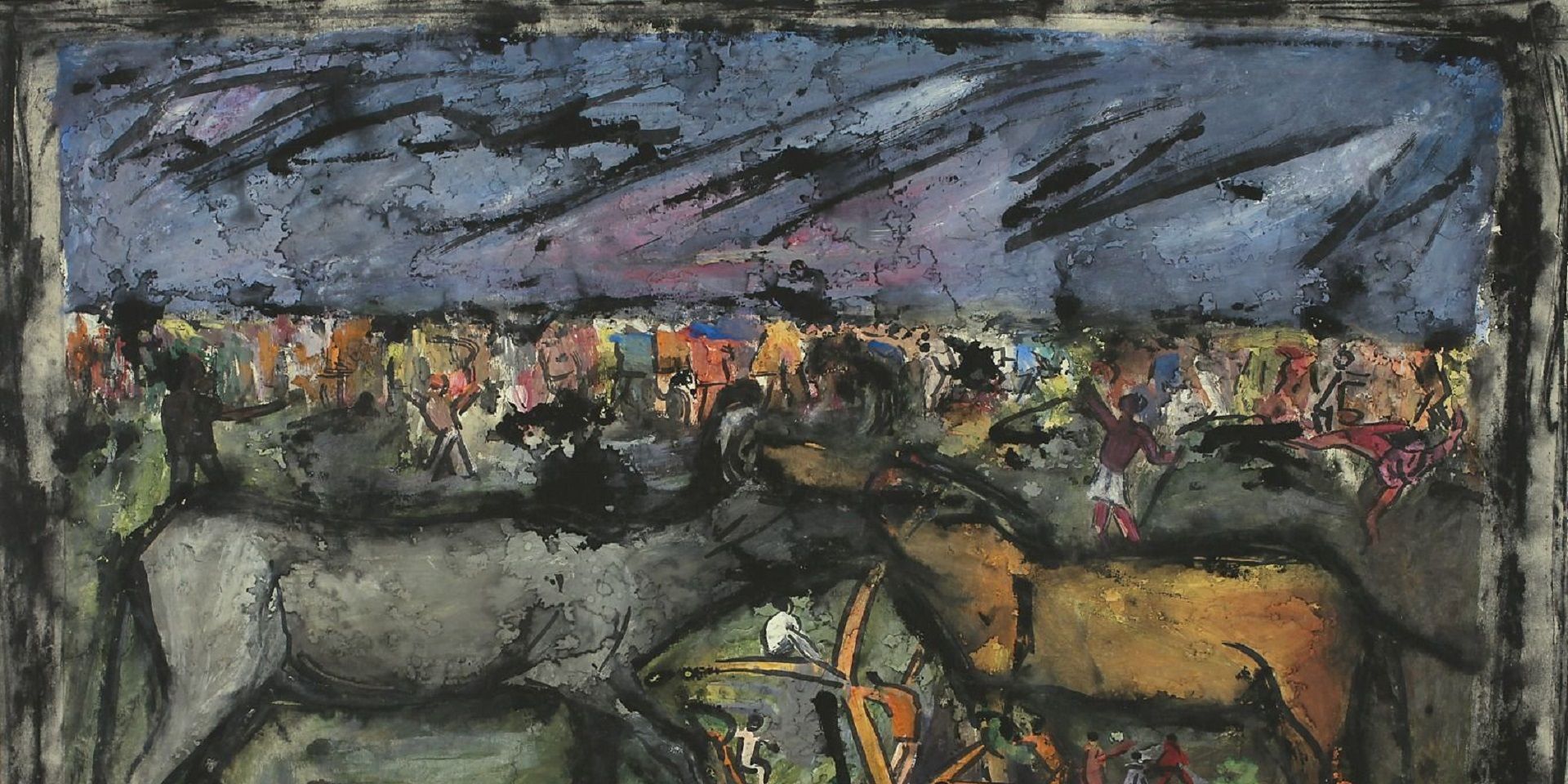
Conversations with Friends
Rudi von Leyden's Indian Art Adventures: With Reema Desai Gehi
Ankan Kazi
June 01, 2024

Conversations with Friends
Objects and the Museum: A Conversation with Sudeshna Guha
Ankan Kazi
July 01, 2024
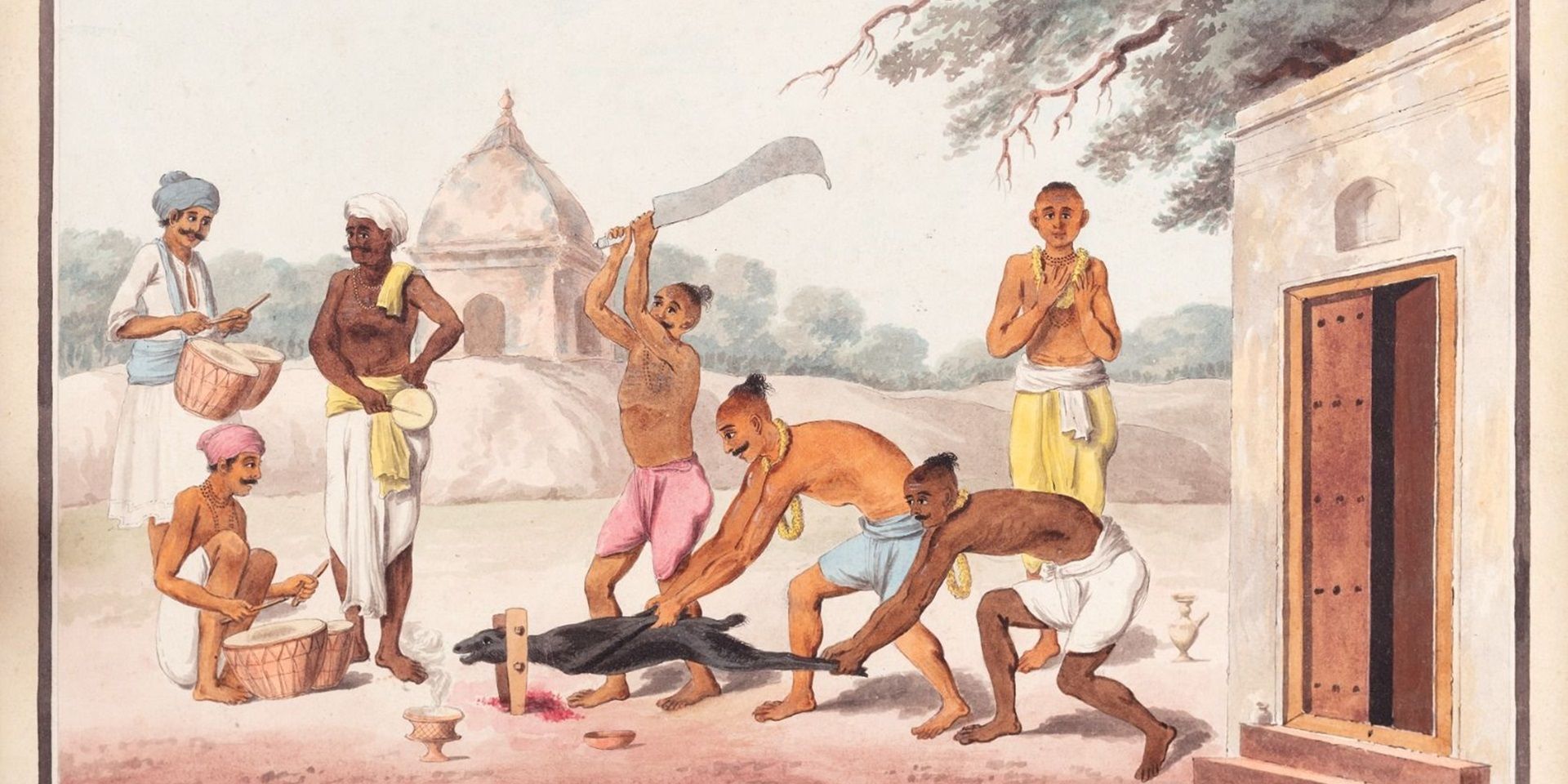
Conversations with Friends
Art of the Graft: A Conversation with Holly Shaffer
Ankan Kazi and Bhagyashri Dange
June 01, 2025

Conversations with Friends
Anita Vachharajani on Writing about Art for Children
Ankan Kazi
June 01, 2025





